.jpg?maxwidth=2020&maxheight=1300)
COPERNICUS, Nicolaus (14731543). De revolutionibus orbium coelestium
Nicolaus Copernicus (1473-1543) is now recognised as one of the fathers of modern science: his one great work, De Revolutionibus orbium coelestium libri sex (Six books on the Revolutions of the Heavenly Spheres), garnered him immediate, if posthumous, fame.

De Revolutionibus Orbium Coelestium, Libri VI by COPERNICUS, Nicolaus
De revolutionibus orbium coelestium (On the revolutions of the heavenly spheres), written by Polish astronomer Nicolaus Copernicus (1473-1543) and published just before his death, placed the sun at the center of the universe and argued that the Earth moved across the heavens as one of the planets. Copernicus anticipated his ideas would be
.jpg?mode=max)
COPERNICUS, Nicolaus (14731543). De revolutionibus orbium coelestium
De Revolutionibus Orbium Coelestium Front Matter First Book (Liber Primus) Second Book (Liber Secundus) Third Book (Liber Tertius) Fourth Book (Liber Quartus) Fifth Book (Liber Quintus) Sixth Book (Liber Sextus) Made available electronically by the NASA Astrophysics Data System (ADS)
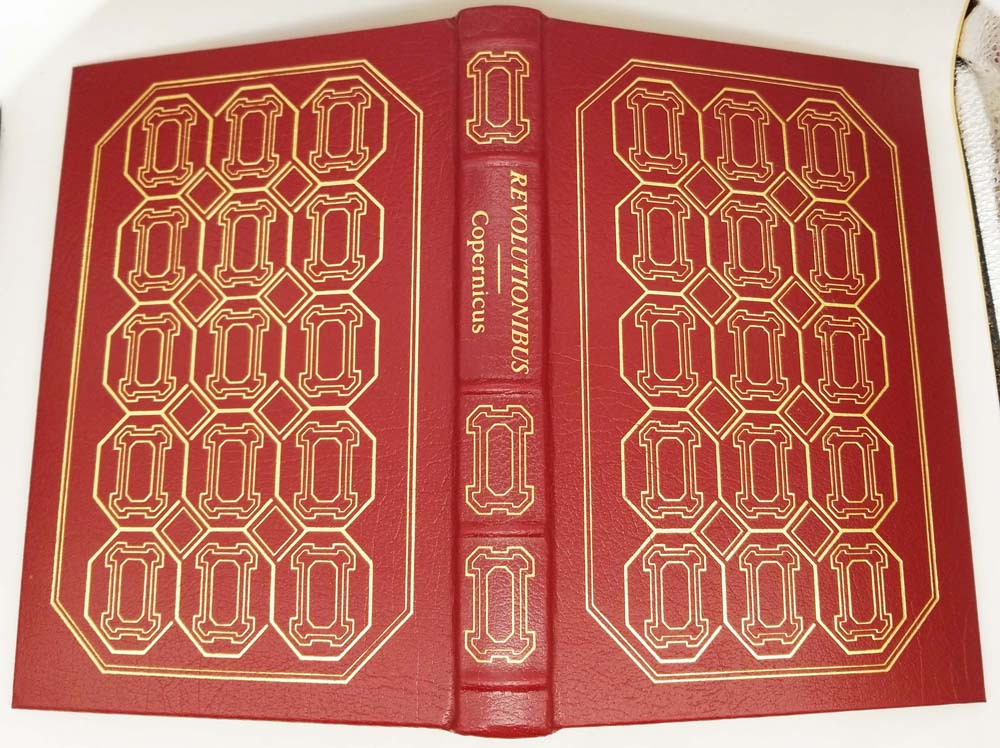
De Revolutionibus Orbium Coelestium Copernicus Easton Press 1993
Copernicus's book De revolutionibus orbium coelestium libri VI ("Six Books Concerning the Revolutions of the Heavenly Orbs"), published in 1543, became a standard reference for advanced problems in astronomical research, particularly for its mathematical techniques. Thus, it was widely read by mathematical astronomers, in spite of its… Read More
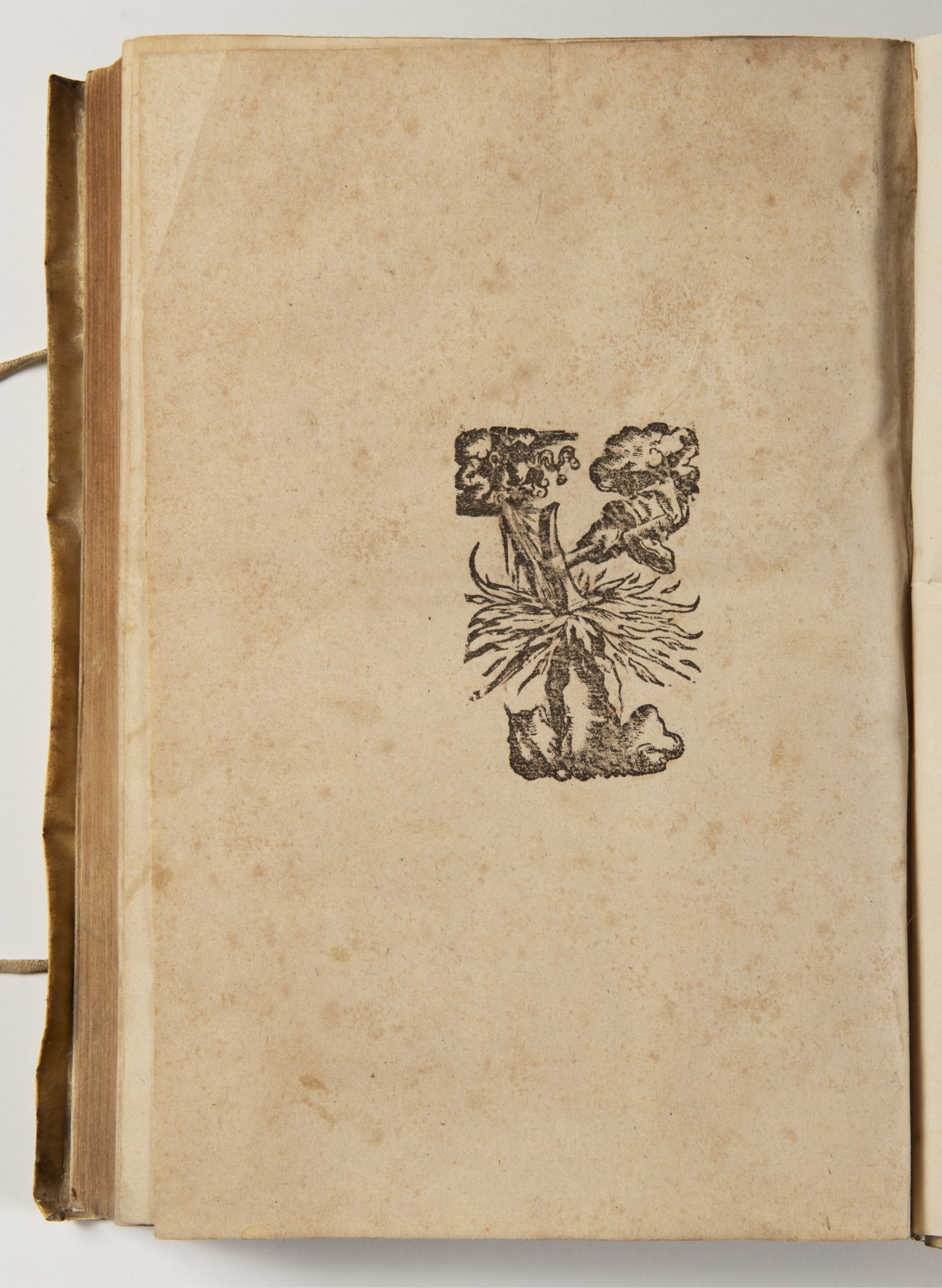
NICHOLAS COPERNICUS (1473 1543) DE REVOLUTIONIBUS ORBIUM COELESTIUM
Copernicus gave his master work the Latin title De Revolutionibus Orbium Coelestium (translated to English as On the Revolutions of the Celestial Spheres). In this work Copernicus began by describing the shape of the Universe. He provided a diagram to help the reader. In the diagram he showed the outer circle that contained all the fixed stars.
.jpg?mode=max)
De revolutionibus orbium coelestium, Nicolaus Copernicus, 1566 Christie’s
The reaction to Copernicus' major work, De Revolutionibus Orbium Coelestium (On the Revolutions of the Heavenly Spheres), published in the year he died, was muted, and there was hardly a revolutionary overturning of how everyone saw the world's place in the universe, as is often claimed. Nevertheless, the astronomer's work would slowly lead to.
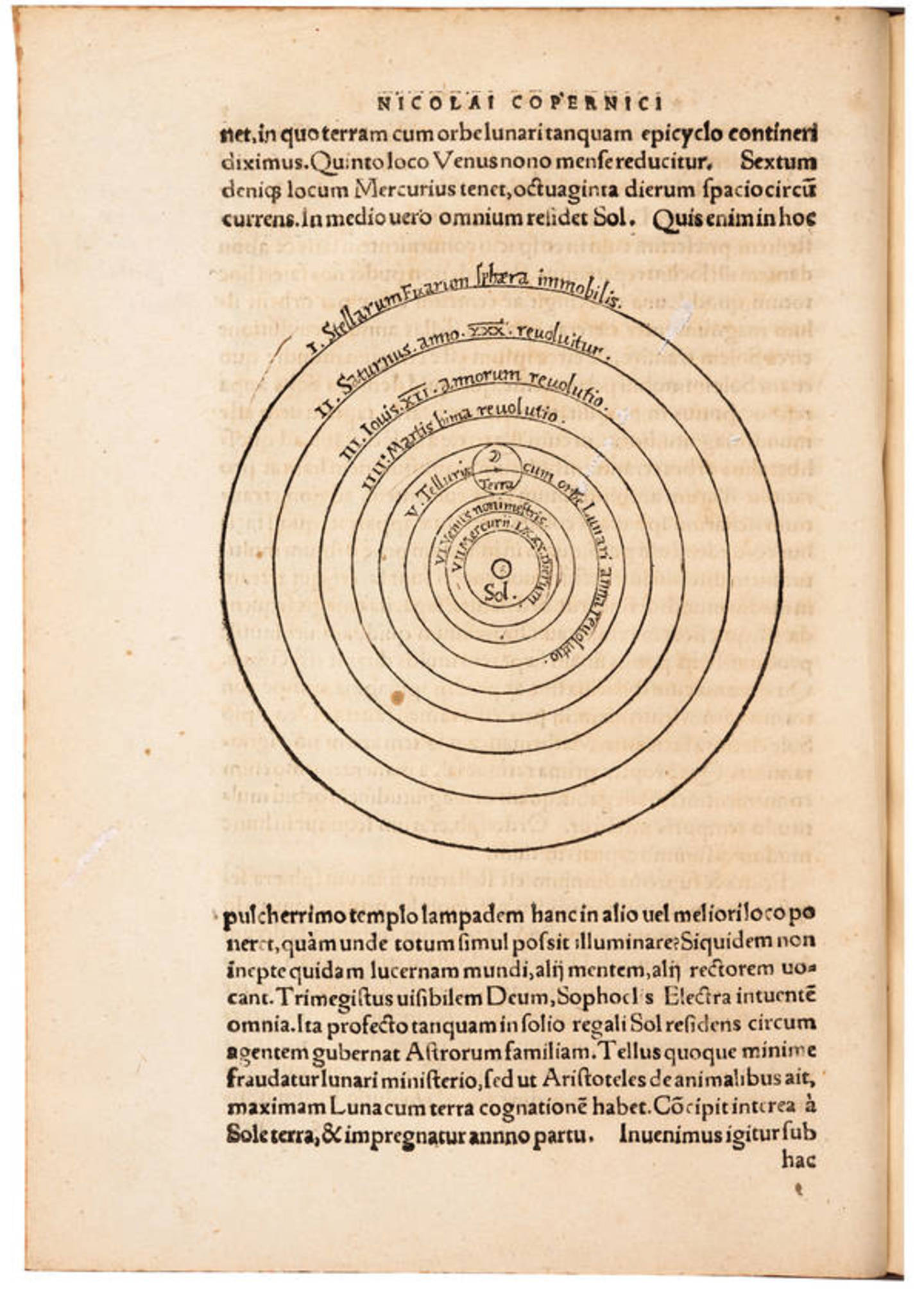
ArtCenter Gallery De revolutionibus orbium coelestium , 1543 by
De Revolutionibus Orbium Cœlestium, Libri VI. Nuremberg, 1543. THE WARNOCK LIBRARY O Nicolaus Copernicus title page of Toru´n Six Books on the Revolutions of the Heavenly Spheres Diligent reader, in this work, which has just been created and published, you have the motions of the fixed stars and planets,
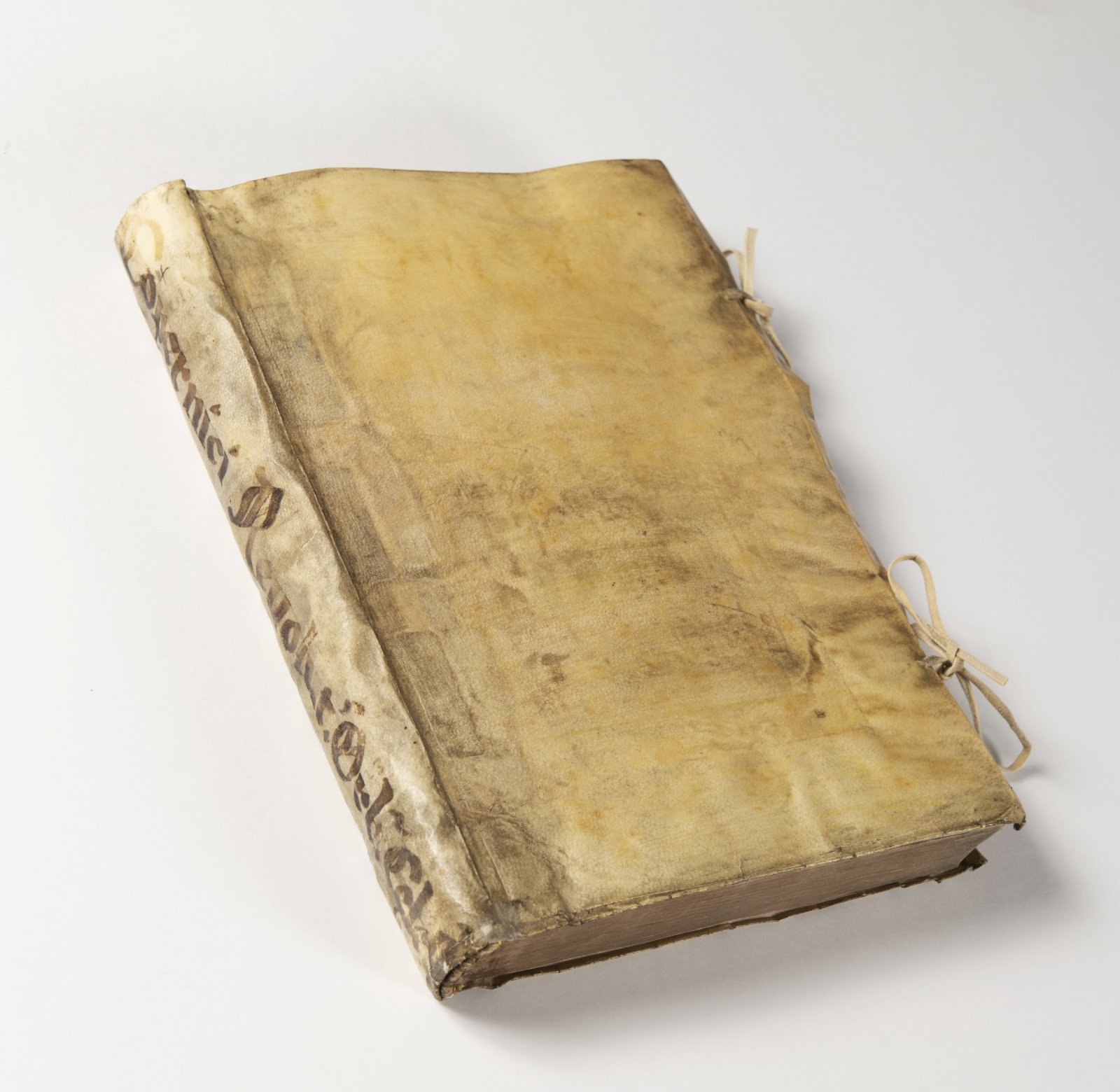
NICHOLAS COPERNICUS (1473 1543) DE REVOLUTIONIBUS ORBIUM COELESTIUM
The Commentariolus ( Little Commentary) is Nicolaus Copernicus 's brief outline of an early version of his revolutionary heliocentric theory of the universe. [1] After further long development of his theory, Copernicus published the mature version in 1543 in his landmark work, De revolutionibus orbium coelestium ( On the Revolutions of the.

De Revolutionibus Orbium Coelestium, Libri VI by Nicolaus COPERNICUS
In 1543, Nicolas Copernicus published his De revolutionibus orbium coelestium, in which he proposed a radical reordering of the celestial order that put the Sun at the center of planetary motion.The proposal was a profound departure from the prevailing geocentric cosmology in the sixteenth century, which was largely based on Aristotelian physics and Ptolemaic astronomy.
.jpg)
COPERNICUS, Nicolaus (14731543). De revolutionibus orbium coelestium
Nicolaus Copernicus (1473-1543). De revolutionibus orbium coelestium, libri VI. Basle: Heinrich Petri, 1566. Copernicus wrote De revolutionibus at the cathedral in Frauenburg (now Frombork) in the northernmost diocese in Poland. Being far away from the main European universities and printing shops, it is very unlikely that Copernicus would have seen his astronomical treatise printed except for.
.jpg)
COPERNICUS, Nicolaus (14731543). De revolutionibus orbium coelestium
De revolutionibus orbium coelestium (On the revolutions of the heavenly spheres), written by Polish astronomer Nicolaus Copernicus (1473-1543) and published just before his death, placed the sun at the center of the universe and argued that the Earth moved across the heavens as one of the planets.
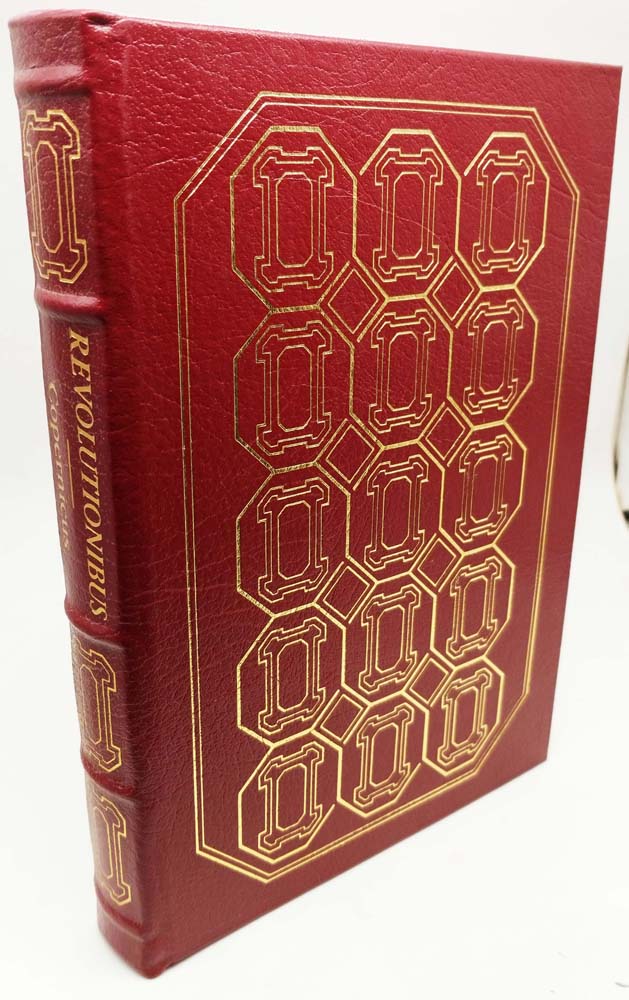
De Revolutionibus Orbium Coelestium Copernicus Easton Press 1993
De revolutionibus orbium coelestium (English translation: On the Revolutions of the Heavenly Spheres) is the seminal work on the heliocentric theory of the astronomer Nicolaus Copernicus (1473-1543) of the Polish Renaissance.
.jpg)
COPERNICUS, Nicolaus (14731543). De revolutionibus orbium coelestium
The publication of Copernicus's model in his book De revolutionibus orbium coelestium (On the Revolutions of the Celestial Spheres), just before his death in 1543, was a major event in the history of science, triggering the Copernican Revolution and making a pioneering contribution to the Scientific Revolution.

De Revolutionibus Orbium Coelestium, Libri VI by Nicolaus COPERNICUS
Over 70% New & Buy It Now; This Is The New ebay. Find Great Deals now!
.jpg?mode=max)
COPERNICUS, Nicolaus (14731543). De revolutionibus orbium coelestium
Edwin Remsberg / Getty Images Nicolaus Copernicus was a Polish astronomer and mathematician known as the father of modern astronomy. He was the first European scientist to propose that Earth and.
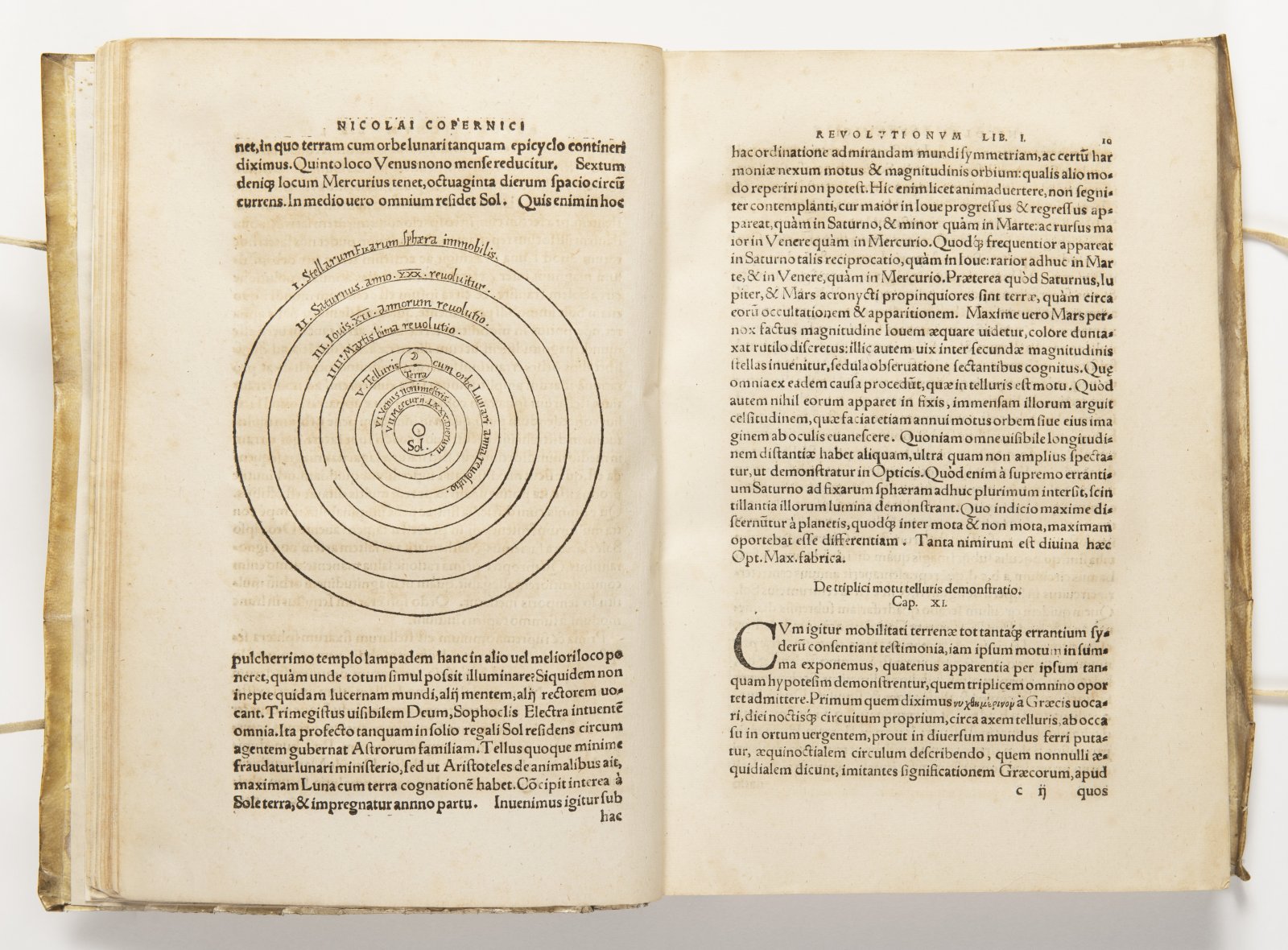
NICHOLAS COPERNICUS (1473 1543) DE REVOLUTIONIBUS ORBIUM COELESTIUM
Polish astronomer Nicolaus Copernicus revolutionized science when he challenged the 1,400-year dominance of Ptolemaic cosmology with the publication of De Revolutionibus Orbium Coelestium (On the.